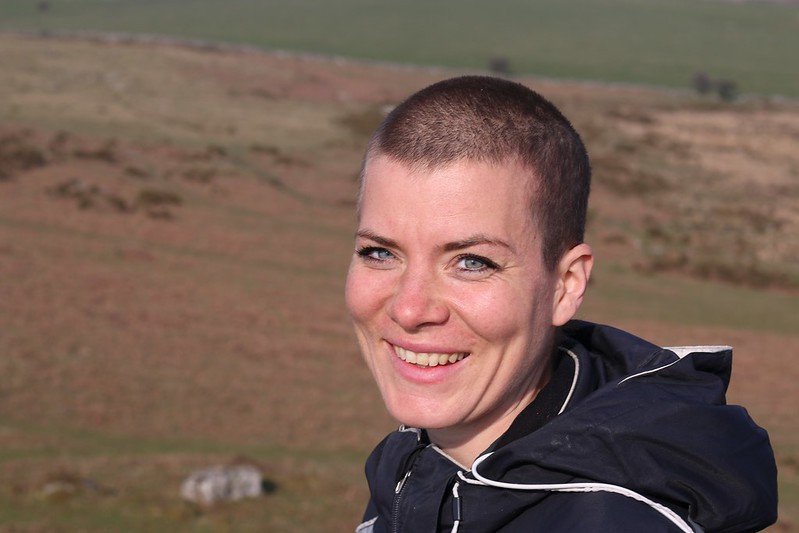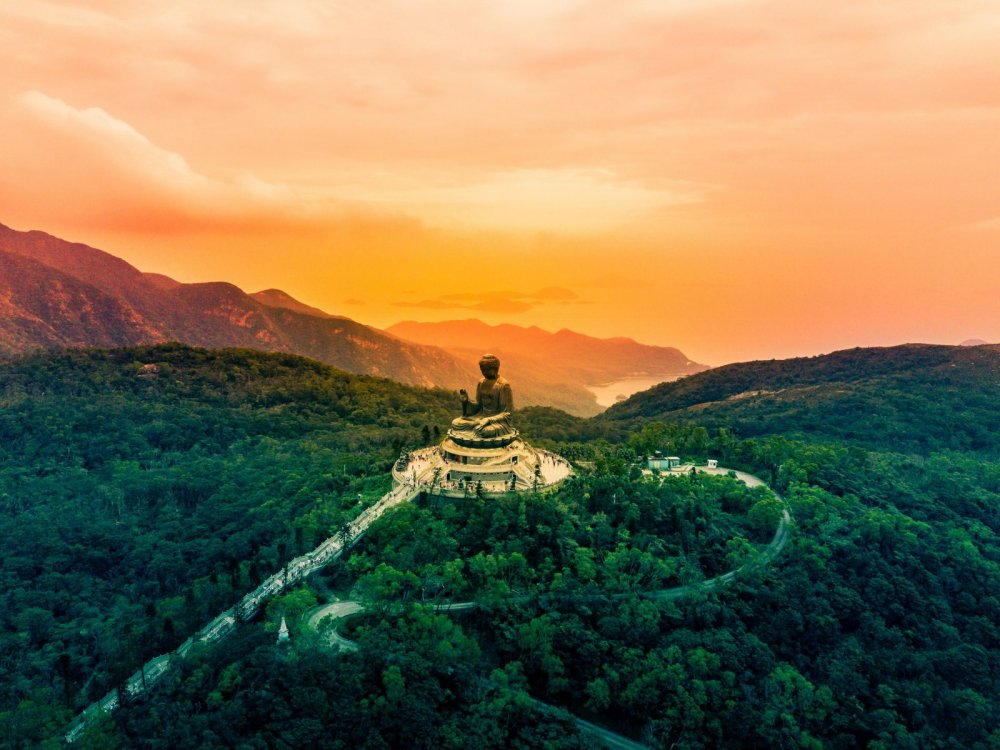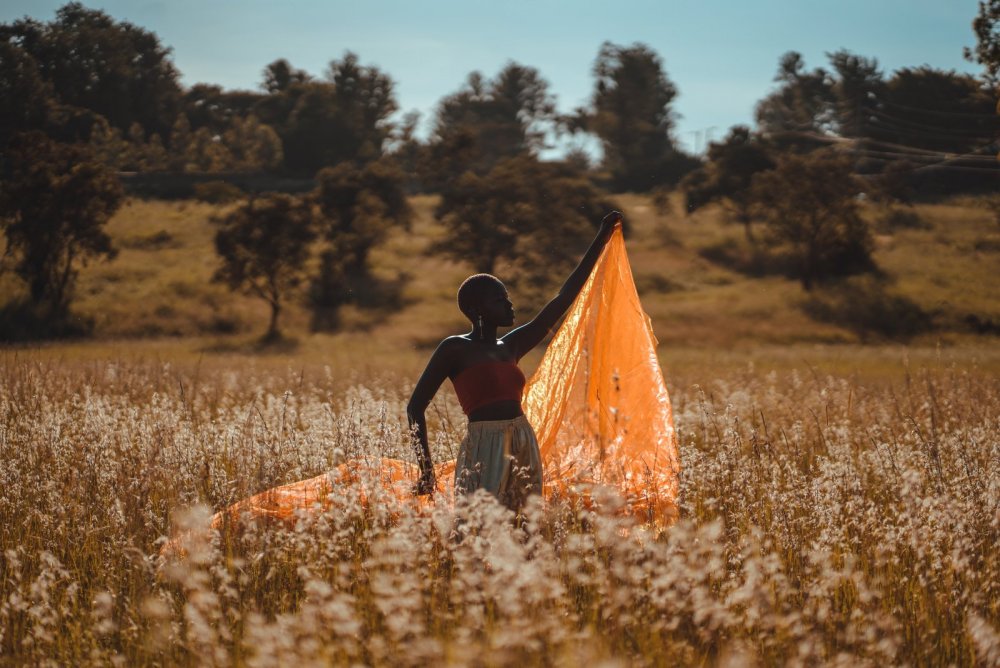Could ancient teachings the Buddha gave 2,600 years ago help to bring more happiness to our lives? Mindfulness teacher Ulla Koenig thinks so. Veronika Eicher chatted with her about finding happiness and her course, 'The Buddha's Path to Happiness.'
The Buddha's Path to Happiness is a five-week course on the happiness Academy shows that covers the insightful teachings the Buddha provided us when it comes to finding our own path to happiness. Creator Ulla Koenig discusses the course, her career, and her personal approach to discovering joy.
1. In your course description you write: 'We can find rest and peace within moments of calm, happiness and clarity.' Did you have any experiences of happiness today?
Yes, there were many small moments of happiness during the day. Everyone by itself a small jewel. The smell of the elder in the garden. Touching my son's sun-kissed hair. Having strawberries for breakfast. A five minute chat with a friend. Pearls on a string. Such moments appear, when there is receptivity and calm.

Ulla Koenig: your course tutor
2. Do we need to search actively for happiness or does it come naturally to us?
We need to reflect on what 'happiness' actually means for us. What is it we are looking for? What do we dedicate our attention, our effort, our time to? Can we create, consume or search for happiness?
For me, happiness arises when the circumstances are right. One part of this is the relationship to experience itself, our way of looking. We have a natural urge to explore into our relationship to life. What we realize here is the path for our practice towards more happiness, peace and contentment. A path which at times goes against the very grain of our impulses and habits.

What can the Buddha teach us about happiness in the 21st century?
3. In your course 'The Buddha's Path to Happiness' you're guiding people back to experience happiness in their daily life based on Buddha's teachings. Is it possible to adapt 2,600 year old teachings to our speedy, 21st-century life?
It's valid to ask whether or not ancient teachings still have something to offer. Indeed, these modern days seem so entirely different from past ways of living. Yet our psyche, our perspectives, and our ways of relating to each other haven't changed that much.
"We need to reflect on what "happiness" actually means for us. What is it we are looking for?"
We're still experiencing the same challenges and asking the same questions as people did thousands of years ago. We still wish to find peace of heart and mind, happiness and a sense of freedom within the challenges of our day-to-day life. Luckily, the Buddha explored deep enough into all of this to give us some food for thought. Timeless reflections, applicable independent of culture, gender and belief.
4. You work with prisoners, refugees and cancer patients. Do you want to share a special memory you experienced of your meditation and mindfulness work in the last years?
What deeply touches me is the relief students feel when they learn through own experience; that there is a set of tools and techniques they can apply anywhere and at anytime to support them.
Mindfulness is an immensely versatile tool, which can, with the appropriate care and caution, be adapted to many situations. I've heard the very same expressions from prisoners as from people with special needs. Sometimes it's within the environment of increased hardship and challenge where people are ready to explore the techniques and dedicate time and effort to it. These are also the environments where I have seen the most transformation in people; expressions which then deepened my confidence and gratitude for the practice.
Enroll now: The Buddha's Path to Happiness

"The happiness path goes at times against the very grain of our impulses and habits"
5. How did you find your personal way of happiness?
It was a windy road, which started off with curiosity and a sense of longing for something more than our consumer culture with its narrow sense of right and wrong. When I was I teenager, I strongly questioned the structures, institutions and common views I grew up with. And I started a search for alternatives, with all its challenges and dead-ends.
Once I found insight meditation (vipassana) I had a sense of coming closer to what I was looking for. The undogmatic freedom of exploration I found in the teachings of the Buddha. The emphasis of personal responsibility instead of blind belief resonated with me.
“We're still experiencing the same challenges and asking the same questions as people did thousands of years ago.”
I could link this back to my personal experience of being a mother, a co-worker, a friend, a lover. None of this conflicted or contradicted these explorations. Over the course of months and years I could see how more freedom, more happiness and more skill to meet the challenges grew within. The exploration still continues. I see it as a gift.
6. Do you find time during your daily work to meditate and be mindful?
As a mother of two, applying mindfulness in daily life is a very important aspect of practice. Qualities like kindness, compassion and equanimity show their potential then and there.
I try to find a healthy balance between time off and on the cushion, enjoying long walks and being in nature. The support of mindfulness reveals itself in the depth of meditation as much as in going shopping in the supermarket with two children or having a meeting with work colleagues.
Interested in enrolling on The Buddha's Path to Happiness? Discover more about the course here and sign up.
New in: Find out more about Ulla's new donation-based course Mindfulness in Times of COVID-19.
Interview by Veronika Eicher
 Veronika is a freelance writer. She likes to spend her free time working on her dream of a farm. On Instagram she writes about climate crises, nature and sustainable living.
Veronika is a freelance writer. She likes to spend her free time working on her dream of a farm. On Instagram she writes about climate crises, nature and sustainable living.
Join the conversation
You are posting as a guest. If you have an account, sign in now to post with your account.
There are no comments to display.